Galapagos Species Database
The Galapagos Species Database shares the information about the species from our Natural History Collections.
Laguncularia racemosa
mangle blanco, white mangrove
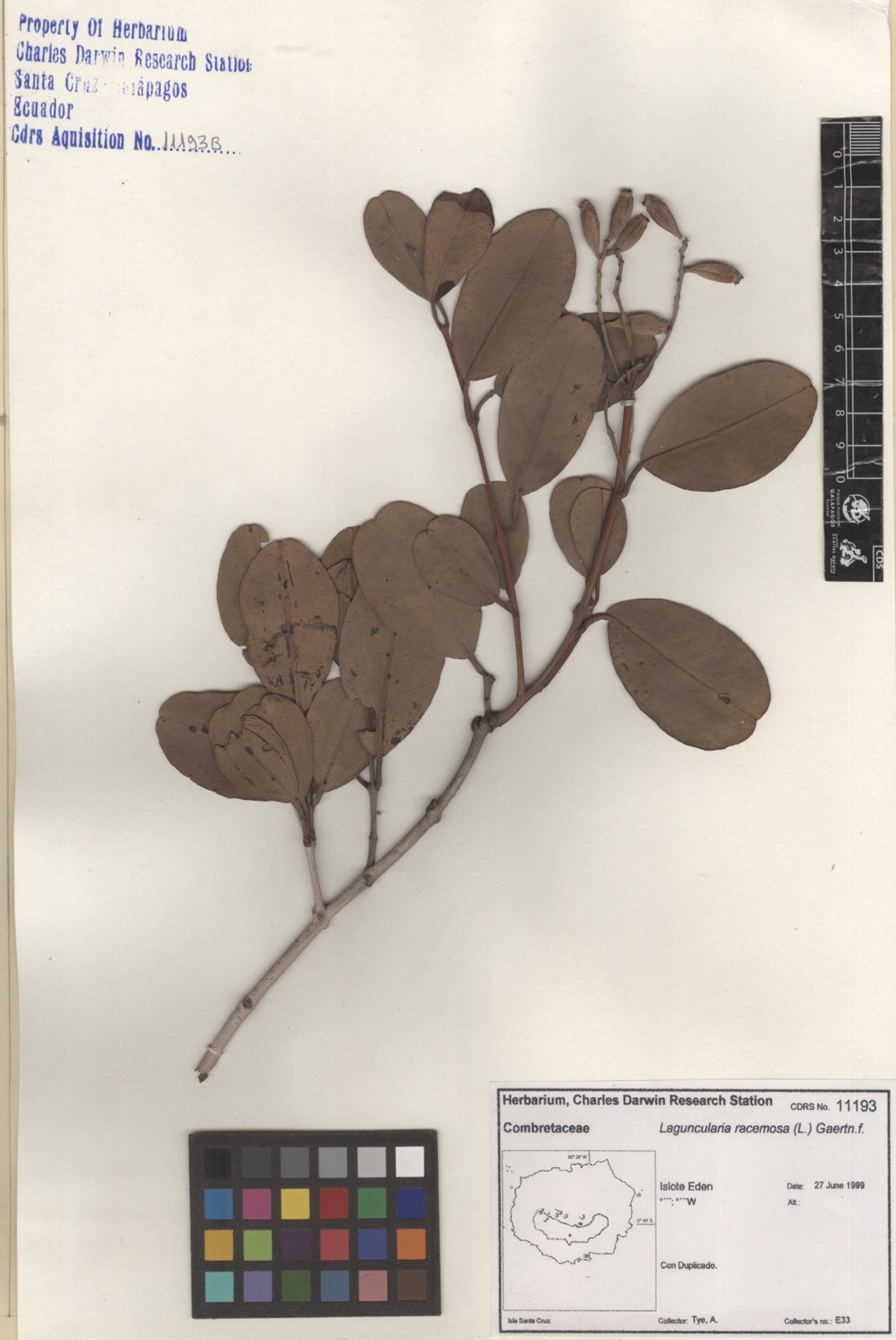
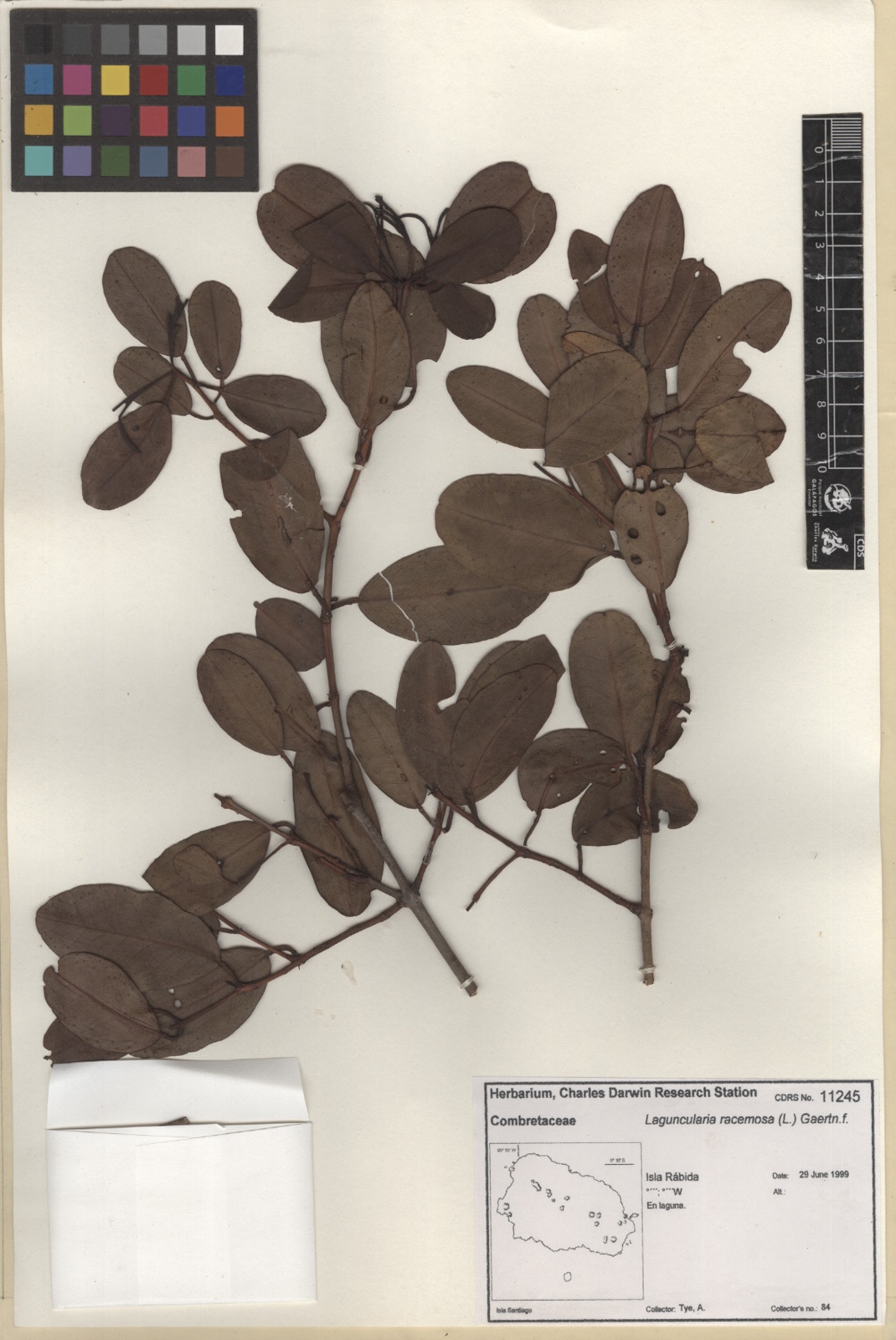
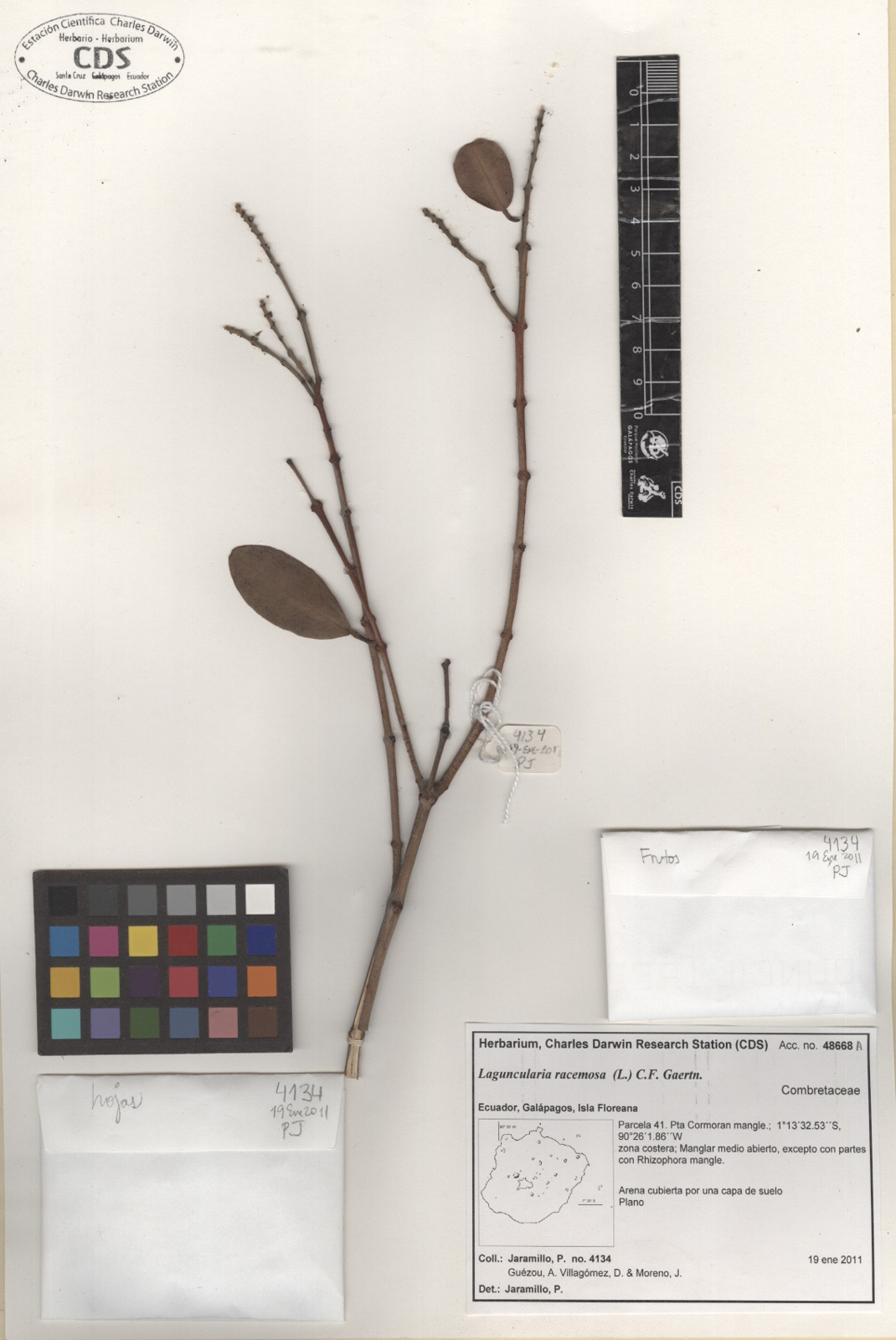

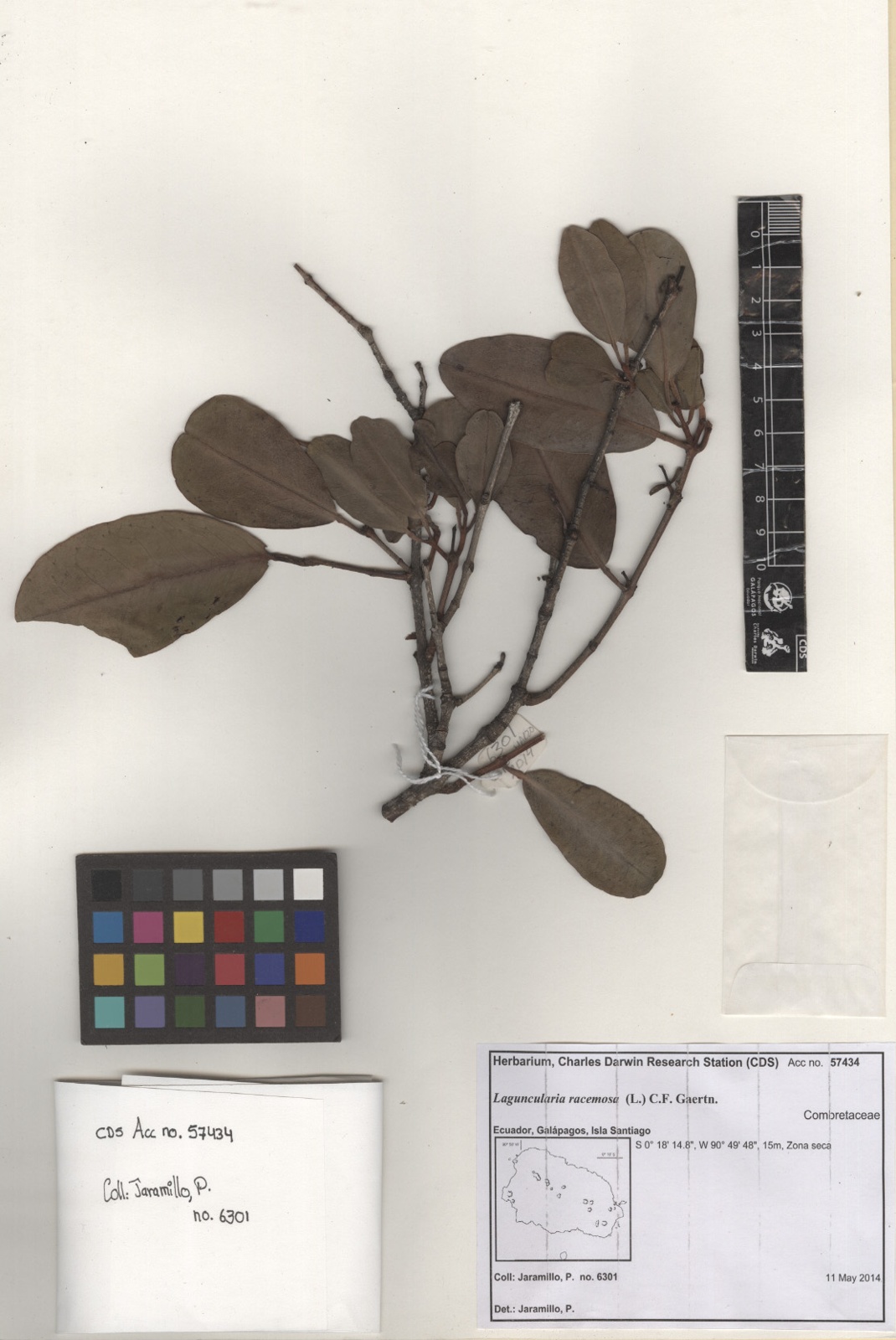
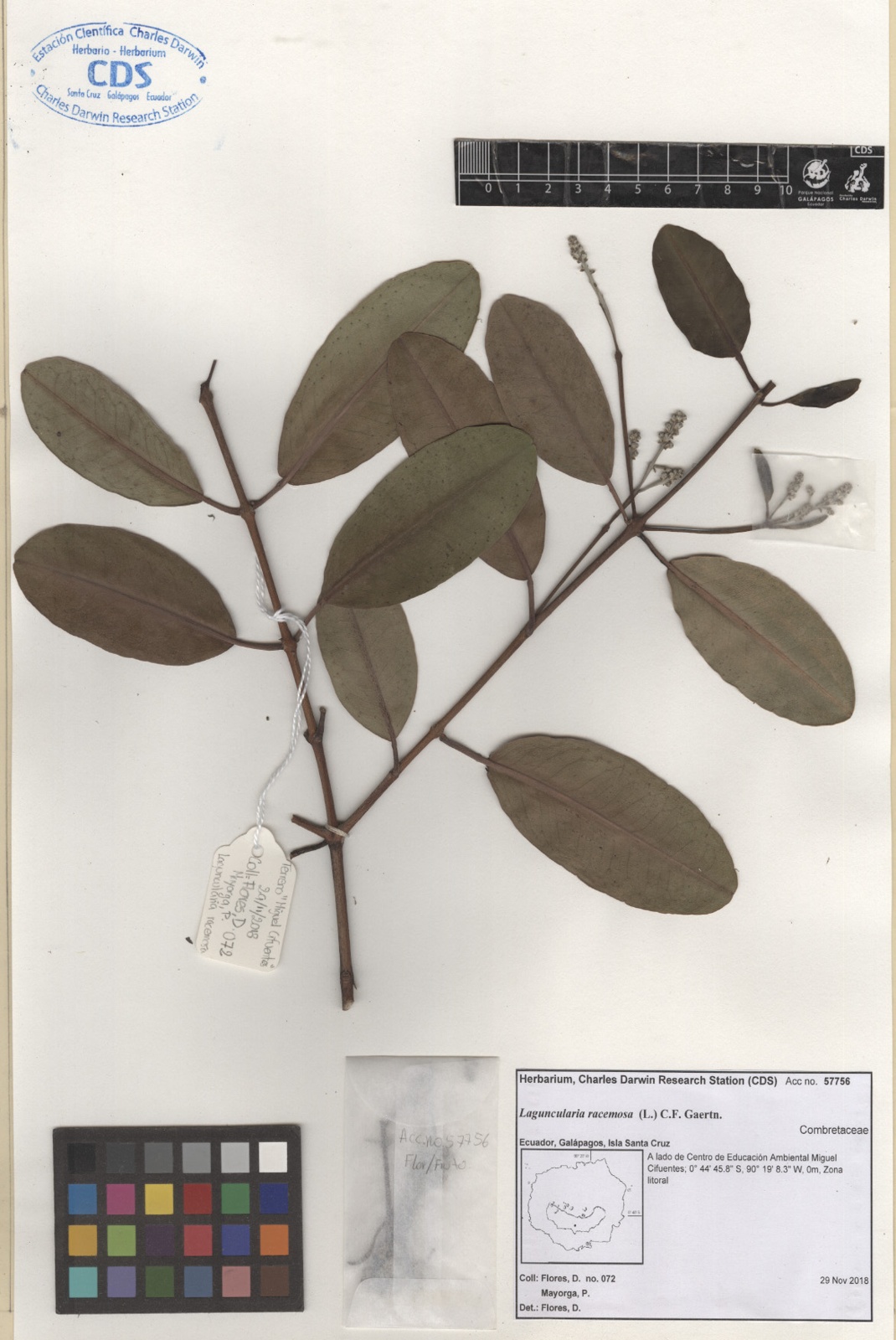
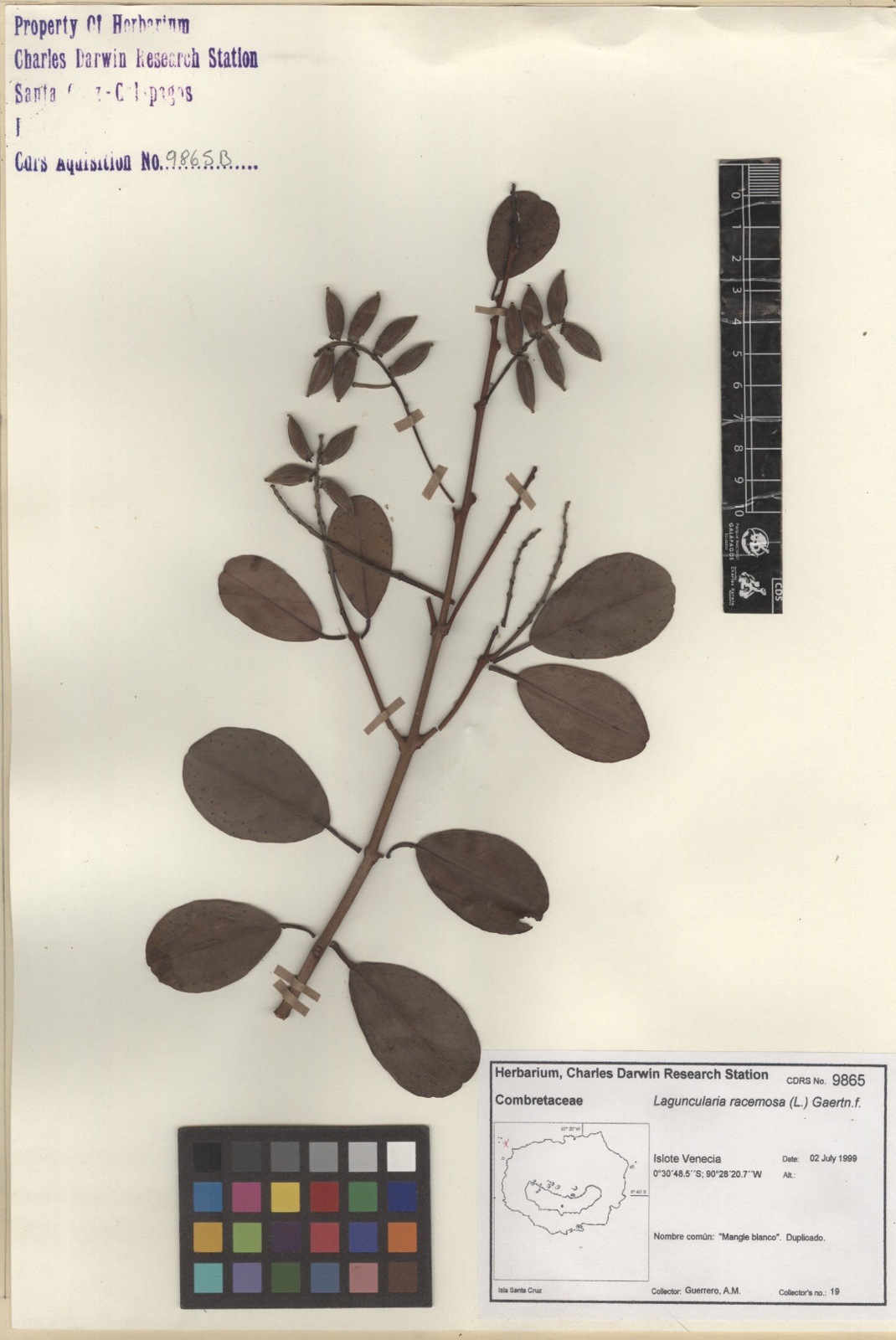

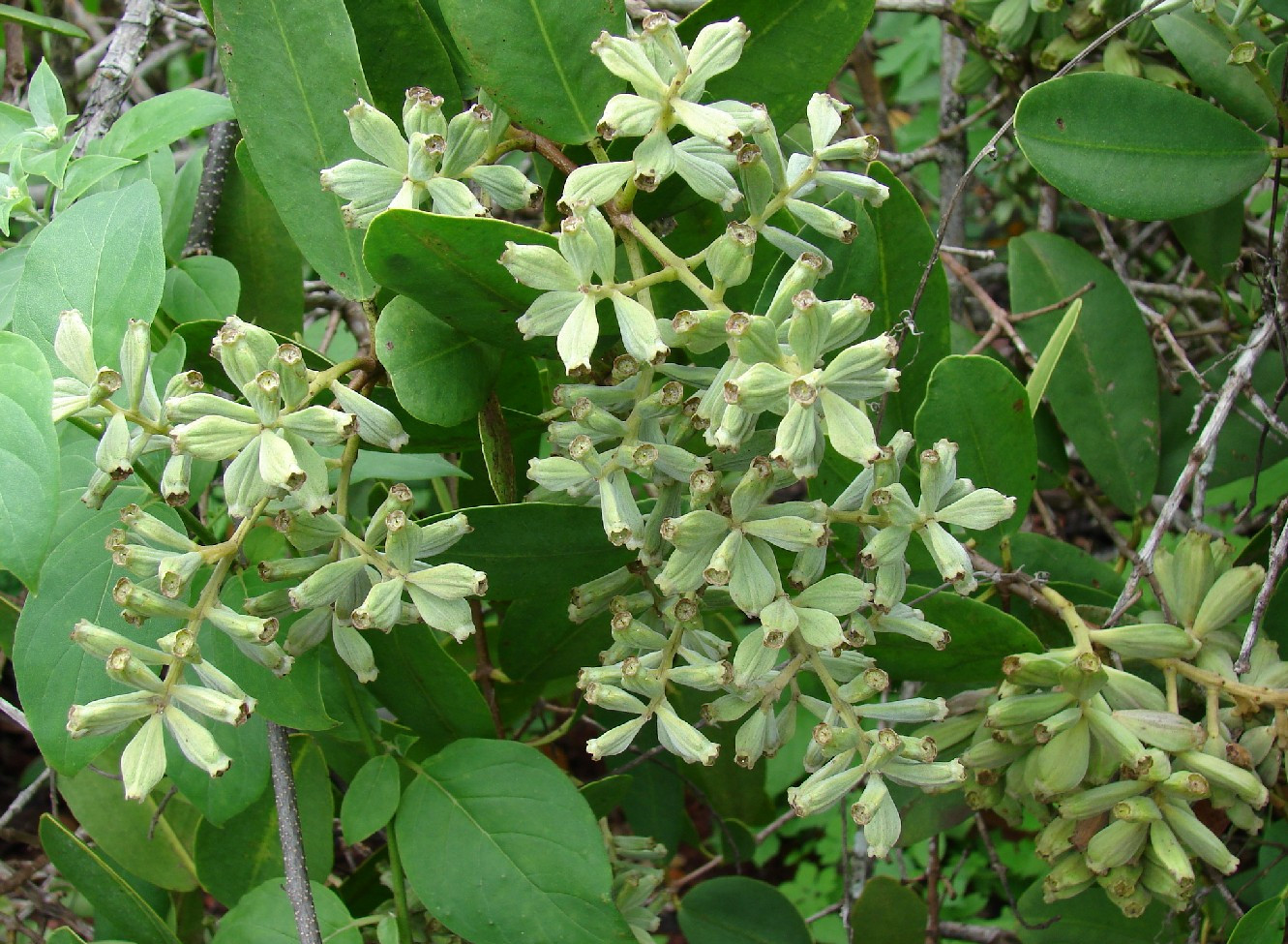
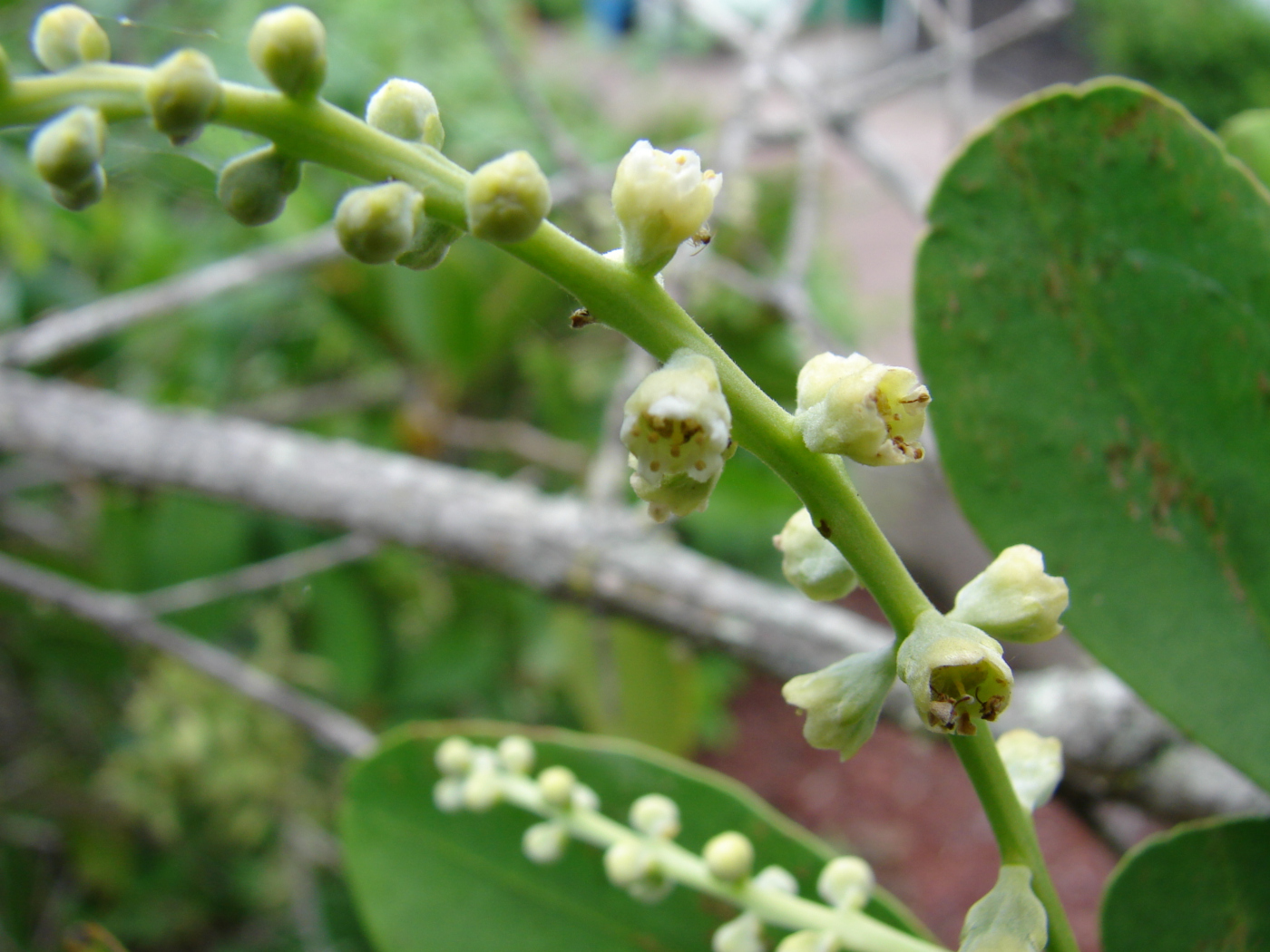

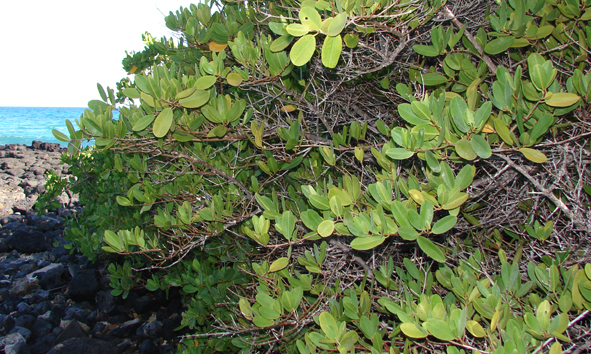

A small coastal tree with thick leaves and cream coloured small flowers. The fruit grow in groups; each a flattened tube.
The fruit middle layer is a “spongy” material, making it ideal for oceanic dispersal (McMullen, 1999).
Domain
Eukaryota
Kingdom
Plantae
Phylum
Magnoliophyta
Class
Magnoliopsida (= Dicotyledoneae)
Order
Myrtales
Family
Combretaceae
Genus
Laguncularia
Species
racemosa
Taxon category: Accepted
Syn.: Conocarpus racemosus L.
Taxon origin: Native
Map of specimen collection localities or observation records for this species in our collections database.
Distribution: The native range of this species is Tropical & Subtropical America, W. Tropical Africa to Angola (POWO, 2023).
- Wiggins, I.L. Porter, D.M. (1971) Flora of the Galapagos Islands Standford University Press, Stanford.
- Schofield, E.K. (1984) Plants of the Galapagos Islands. Field Guide and Travel Journal. Universe Books, New York, 159 pp.
- Andersen, S.W. Hamann, O. (1986) Manglares de las Islas Galapagos. Revista Inst. Geogr. Mill. Ecuador. 23: 101-122.
- Abbott, I. Abbott, L.K. (1973) New distribution records of 65 plant species within the Galapagos Archipelago. Charles Darwin Research Station (CDRS), unpublished.
- Jaramillo, P. (1998) Distribución Espacial de la Vegetación Vascular y Dispersión de Especies Introducidas dentro del Parque Nacional Galápagos. Tesis de Doctorado en Biología, Universidad Central del Ecuador. Especialización ECOLOGIA DE POBLACIONES.
- Jørgensen, P.M. León-Yánez, S. (eds.) (1999) Catalogue of the Vascular Plants of Ecuador. Monographs in Systematic Botany from the Missouri Botanical Garden 75. Missouri Botanical Garden Press, St. Louis, 1181 pp.
- McMullen, C.K. (1999) Flowering plants of the Galapagos. Cornell University Press, Ithaca and London, 370 pp.
- Atkinson, R. Guézou, A. & Jaramillo, P. (2009) Siémbrame en tu jardín - Plantas nativas para jardines en Galápagos. Fundación Charles Darwin, Puerto Ayora, Galápagos, Ecuador, 151 pp.
- Royal Botanic Gardens, Kew Missouri Botanical Garden (eds.) (2013) The Plant List, Version 1.1. Published on the Internet; http://www.theplantlist.org/ (accessed 1st January).
- Robinson, B.L. (1902) Flora of the Galapagos Islands. Papers from the Hopkins-Stanford Expedition to the Galapgaos Islands. Proc. Amer. Acad. 38(4): 78-270.
- Stewart, A. (1911) A botanical survey of the Galápagos Islands. Proc. Calif. Acad. Sci. 4th Series, 1: 7-288.
- Riley, L.A.M. (1925) Critical Notes on Galápagos Plants (St. George Pacific Expedition, 1924). Kew Bull. Misc. Info. 1925(5): 216-231.
- Schönitzer, K. (1975) Galápagos Plants. Privately Published, Quito: 1-43.
- Schofield, E.K. (1971) Field Guide to Some Common Galápagos Plants. Lindblad Travel, Inc., NY: 1-42.
- Sequeira, A.S. Lanteri, A.A., Scataglini, M.A., Confalonieri, V.A. & Farrell, B.D. (2000) Are flightless Galapaganus weevils older than the Galápagos islands they inhabit? Heredity 85: 20-29.
- Royal Botanic Gardens, Kew (2022) Plants of the world online POWO (2022): Plants of the world online. Published on the Internet; Https://powo.science.kew.org/

